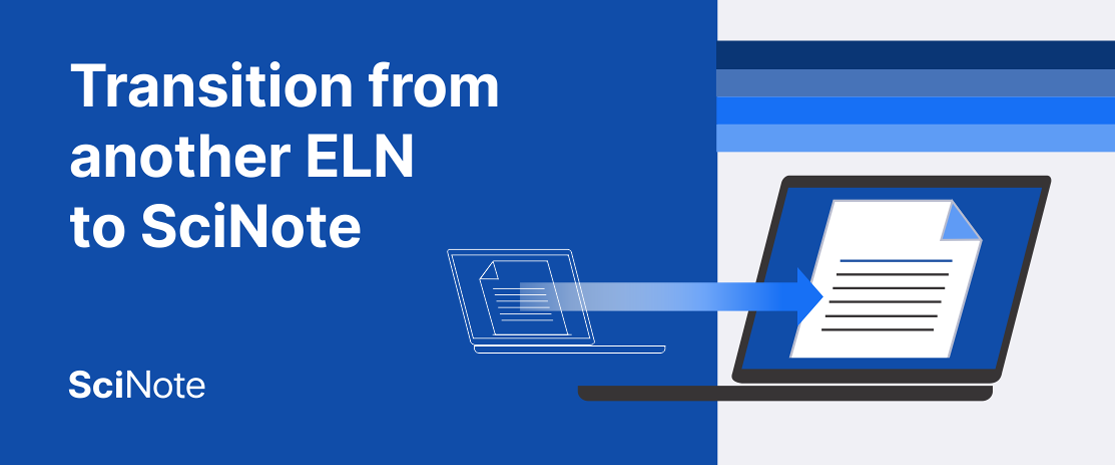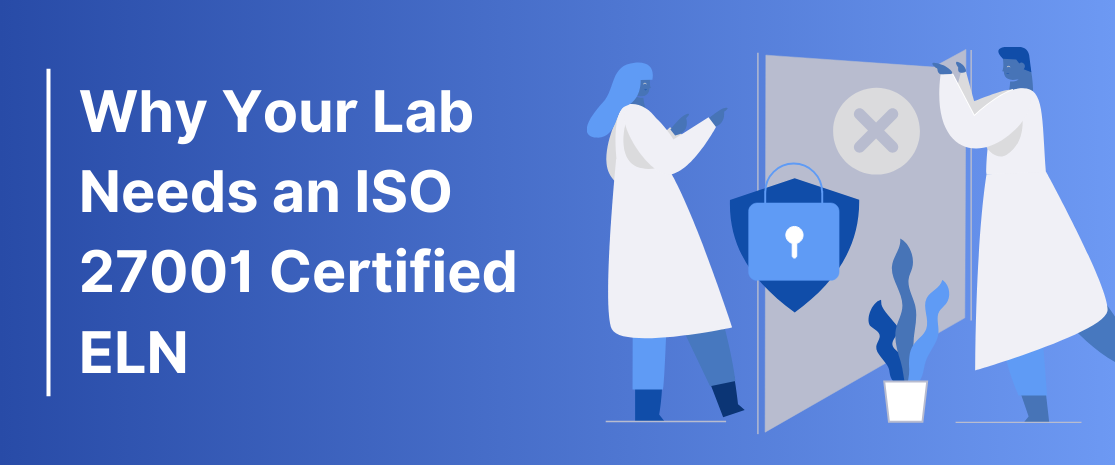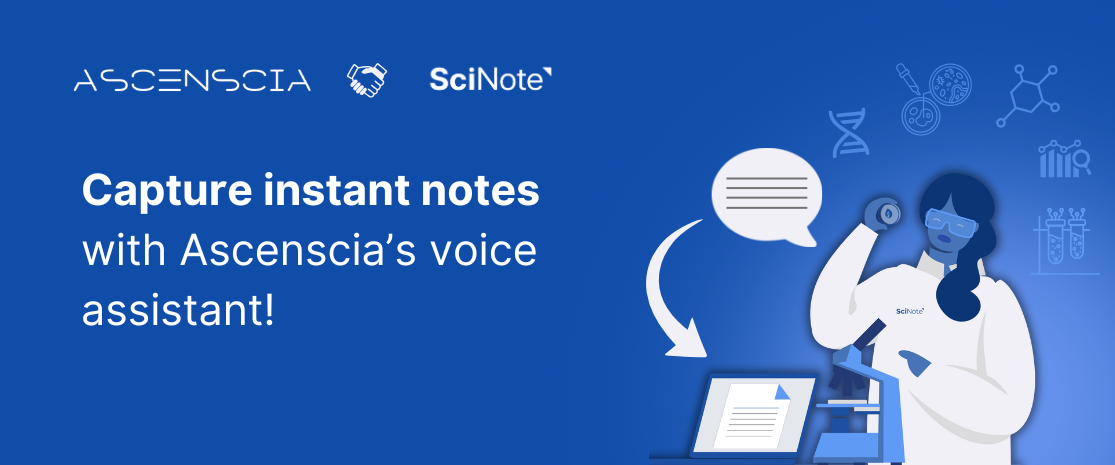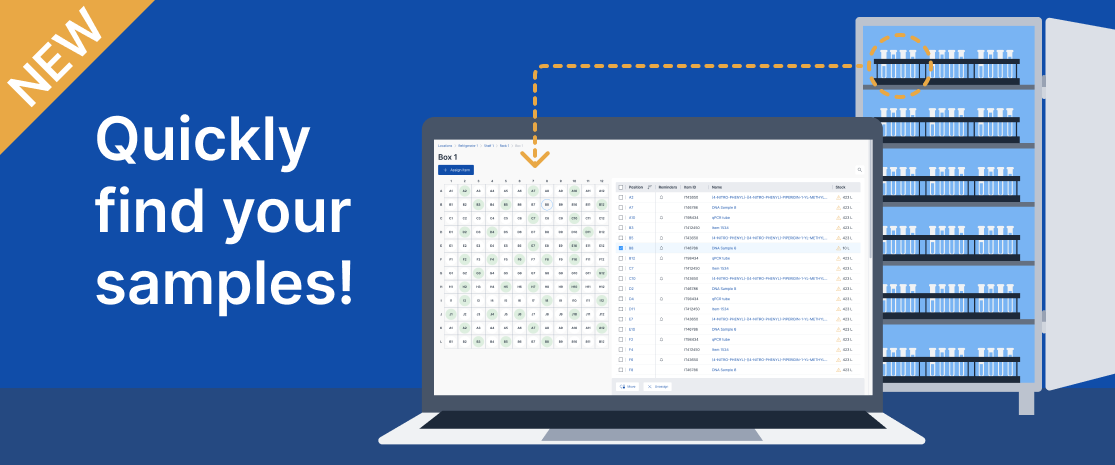Transition from another ELN to SciNote
If the electronic lab notebook (ELN) solution you are currently using does not meet the lab’s needs anymore, a switch to an alternative, like SciNote, might be necessary to ensure uptake of the ELN notebook within the lab. With proper planning, the transition can be straight forward and well-managed. This blog post outlines the strategic considerations necessary when planning the transition from another ELN to SciNote, and the steps required during the transition. Follow this guide to help you understand the options available.
Table of contents
- When is it time to make a switch?
- Tips for selecting an alternative electronic lab notebook
- Why switch to SciNote?
- Options to transition between two ELN notebook systems
- Migration of existing data into SciNote
- Use cases: examples of successful transition to SciNote
When is it time to make a switch?
A major indicator that it’s time to make a switch is when there is low adoption in the lab. For example, you are still sending documents or spreadsheets through emails, or you are missing data in the system because lab members are not regularly recording steps and results within the electronic lab notebook. This is the result of:
- Lack of effective onboarding and ongoing support: Your current ELN vendor doesn’t provide sufficient onboarding or customer support, or charges extra for such services.
- Bad user experience: Your current ELN has an outdated interface or a complex structure, so the ELN is difficult to use.
- Change of your research data management needs: Your needs might have changed since you signed onto your ELN (e.g., compliance requirements, lab inventory management needs), so the ELN doesn’t meet your needs anymore.
From an organizational level, other reasons that you might want to make a switch can include:
- Pricing: The existing ELN pricing structure no longer makes sense (e.g., if you are scaling up quickly), and the ELN is becoming unaffordable.
- Missing integration capabilities: The electronic lab notebook might have an ineffective API that prevents you from integrating with other necessary software solutions to automate.
- Resource hogging: The ELN notebook has a heavy footprint and is taking up too much of your resource to maintain.
If you have encountered these, it is time to look for a better alternative.
If you are still sending lab data via email file attachments, it is time to make a switch to a better ELN.
Tips for selecting an alternative electronic lab notebook
You’ve gone through the process once before; the knowledge of your existing ELN can already help you choose something that’s better for your lab. Here are some additional tips to keep in mind when you’re looking for an alternative ELN to switch to:
- Evaluate your requirements again to make sure the alternative will meet them. Use this free ELN selection template to help you with this task.
- Look for vendors that will offer support with the transition if issues do arise. Ideally, this support should already be included in your plan.
- Make sure to thoroughly test the alternative with a trial, especially if your reason for switching is due to bad user experience. Many vendors will offer to sign an NDA, so you can involve lab members to test the ELN using real experimental data in the demo system.
“The issue with the other ELN came down to a fairly qualitative problem that people had with the user experience, rather than specific missing features….What we actually needed was an electronic lab notebook that people were actually going to use, so we wanted people in the lab to try doing real things with each and to really test each ELN.”
Sam DeLucaDirector of Engineering, Cyrus Biotechnology
Why switch to SciNote?
All SciNote Premium plans include a 14-day free trial, free onboarding and ongoing support with your dedicated customer success manager, as well as continuing maintenance and updates. SciNote’s file hierarchy (projects/experiments/tasks) make it easy to store and access all your research information. Plus, its modern and user-friendly interface is intuitive to use, and the visualized workflow gives you an excellent overview of how things fit together.
SciNote has been recognized as a leading provider of ELN solutions, and acknowledged as the leader in terms of user satisfaction based on our exceptional user-vendor relationship. See what our users say about us on G2, the largest and most trusted software marketplace offering only authentic peer reviews.
“Having personally used many different ELN systems over the years, I think SciNote stood out as the easiest to work with in many aspects. We particularly have benefited from the protocol sharing function, the easy search function, and the ability to structure experimental workflows and associated data where many different people contribute from start to end.”
Søren RasmussenDirector, Neuroscience Discovery & Projects, Contera Pharma
Options to transition between two ELN systems
Transition from an existing ELN to SciNote could look like a daunting task; after all, the status quo might seem more appealing. In reality, though, many have done so successfully, and the process can be rather straightforward.
The first step is to decide whether you will handle the transition with a clean-cut or a gradual shift for ongoing projects.
A clean-cut would mean that from a defined date onward, the old ELN system would not be used anymore; all projects, data and processes would be managed and tracked exclusively with SciNote.
With a gradual approach, both the old and the new ELN systems will operate for a period of time (usually a matter of months). This means the open projects that were started in the old system are managed there until they finish/close, whereas new projects are created and managed exclusively with SciNote. In this way, the gradual shift between the systems is achieved and is concluded once all the projects managed in the old system are closed.
Regardless of the approach, another decision that needs to be made is regarding the access of legacy data – that is, data from previously concluded projects. It is certainly possible to migrate all legacy data into SciNote. However, the most elegant option is to identify specific data that needs to be migrated or at least accessible, move it into SciNote, and archive the rest.
During the transition, it is important to prioritize new and active projects for the transition, as those are the ones that will get you to start using the ELN and establish your best practices, workflows, and file structures. If you went through a thorough trial process using your lab’s actual data, you might already have some ideas how data should be structured within SciNote. Once the structures and best practices are set up, then you can consider migration of data.
This is where an experienced customer support team can come in handy, as the team can provide guidance through the process and help you create a tailored plan for the transition based on your organization’s situation. You can lean on the team to provide past examples and use cases to help you make the best decisions. Should you have a previous system provider, it is as important to also have the information or assistance from their end on how your data can be accessed or exported from the old system. This can help guide which scenario of transition and data migration is the optimal choice.
Once these decisions are made, then we can move to the next phase, which is the migration of existing data.
Migration of existing data into SciNote
Migrating between two software systems will often require the migration of at least some of the data. This is best done after you have set up your file structure in SciNote, so you can migrate existing data into the correct fields.
For ELNs, the absence of data standardization among software vendors (not for the lack of trying, though) means some extra efforts are necessary in the migration process – it’s like trying to fit a square peg in a round hole; some adaptation is necessary. Furthermore, we often need to rely on the export capabilities of the old tool and the import capabilities of the new tool. This is because we don’t always have access to the underlying data models and mechanisms of different software systems.
The steps described below will give you an overview of the data migration process, so you can understand what’s involved. Keep in mind that with SciNote, your dedicated customer success manager will assist you throughout the process:
1. Identify data to be exported/imported
As mentioned, it is important to prioritize data relevant to new and active projects during the transition, and identify data that needs to be accessed to be migrated into SciNote first.
2. Check the export capabilities of the old system
Most of the software systems generate some sort of data export. Ideally, the export should be in a structured data format, such as a csv table or a series of csv tables.
If the export is in a structure data format, such as a .csv table or a series of .csv tables, then you have the following options to import data into SciNote:
SciNote’s API
You can automate the data migration process by taking advantage of SciNote’s API and writing a script to help handle data migration, so that your existing data will move into SciNote’s Projects/Experiments/Tasks structure. Our team will provide the necessary API documentation and work with your IT staff to implement this.
SciNote’s inventory management system
The most straightforward scenario is to move the inventories from the old ELN into SciNote. In this case, lab inventory items can typically be exported and then uploaded into SciNote directly; SciNote accepts comma separated (.csv), tab separated (.txt and .tsv) or Excel (.xlsx) inventory files.
Also keep in mind that the inventory management system can also be used to manage samples, reagents, supplies, and instruments. You can explore various options under our Solutions section.
Alternative use of SciNote’s lab inventory management system
Given the flexibility of SciNote’s inventory management system (e.g., custom column names, file uploads, and more), you also have the option to store data from your old system here. This is something that our customer success team can walk you through and help you get organized.
If your existing ELN only exports unstructured data (e.g., pdf reports or word documents), or if your situation doesn’t fall into the above three scenarios, you can still move data into SciNote via manual migration, custom solutions, or add the data files as attachments within SciNote. Make sure to chat with our team directly about your unique needs, so we can explore additional options when it comes to data migration for you.
3. Map the data objects in your old software solution and SciNote
Due to the lack of data standardization, the information will most likely be organized differently, even though the two tools serve the same or very similar purpose. In this step, you will need to understand how your data was organized in the old ELN system and how it will be organized in SciNote’s structure.
 For example, you will need to determine which pieces of data objects – this could be the name of the research project, cell line, protocol, or even a step within a protocol – from the old system will map to a SciNote Project, Task, Experiment, and so on.
For example, you will need to determine which pieces of data objects – this could be the name of the research project, cell line, protocol, or even a step within a protocol – from the old system will map to a SciNote Project, Task, Experiment, and so on.
Pro-tip: Projects/Experiments/Tasks are just terminology used by SciNote to specify its hierarchy. Think of them more as components that you can build your file structure based on – much like the menu structure of a website, or a file directory with folders.
You might need to go even more specific when it comes to mapping fields, as some objects can be more complex or have multiple components. For example, you will need to determine what represents the title of a Task, the Description of a Task, a step within a Task, etc.
Keep in mind though that there is a reason for such granularity – this gives your data a much better structure, and leads to better accessibility (e.g., advanced search, internal references) and integration. This is also one of the reasons why SciNote can provide high quality API when compared to other ELN solutions.
This data mapping step is important; it is good to take some time in this step to properly map your data so to avoid having to clean up data in the future.
4. Find incompatibilities between the systems and prepare a resolution strategy
Sometimes you will find out that SciNote does not have an appropriate place to store some pieces of data. Or you will determine that the title for a Protocol in SciNote allows fewer characters than the old system (SciNote allows 253 characters for Protocol title). For such situations, you will need to prepare a list of such incompatibilities, and for each, a resolution to tackle the issue. For example, you may decide to attach a piece of data to a different field or simply shorten the name of the Protocol.
Make sure to document your resolution strategy in case you need to refer to it in the future.
5. Migrate data
If you are migrating data manually, this will involve copying/pasting data objects from the old system into the corresponding fields as determined in step 3 and 4 within SciNote.
If you are migrating a large amount of data, it makes sense to develop a data migration script that will automate this step. You can take advantage of SciNote’s API to do this. Once developed, you just need to execute the script to start migrating your data.
If you are migrating data into SciNote’s lab inventory management system, make sure to organize your data first according to the structure you set up within SciNote, before uploading the file into SciNote.
6. Verify that the data was transferred correctly
Review the migrated data and perform validation, if applicable, to ensure that data was transferred correctly and that SciNote functions correctly with the migrated data.
Many have tackled transitions and succeeded
If you are still worried at this point – know that many have managed transitions and found success. Here are the case studies and examples of users who transitioned to SciNote.
- Cyrus Biotechnology (ELN to SciNote)
- Advanced Cellular Dynamics (ELN to SciNote)
- Ingenza (Paper/files to SciNote)
- Neuway Pharma (Paper/files to SciNote)
As mentioned, our Customer Success team will help you along the way to plan for your transition and ensure things go smoothly.
Your ELN is only a good investment if people can use it effectively. If your ELN is not meeting your requirements, then it is time to switch. With this guide, and the support your Customer Success Manager, you are now ready to take the steps toward transitioning to SciNote from your existing ELN.
Not sure where to get started with your transition?
Let us know – we will work with you to ease your transition from another electronic lab notebook to SciNote
Book a meeting









